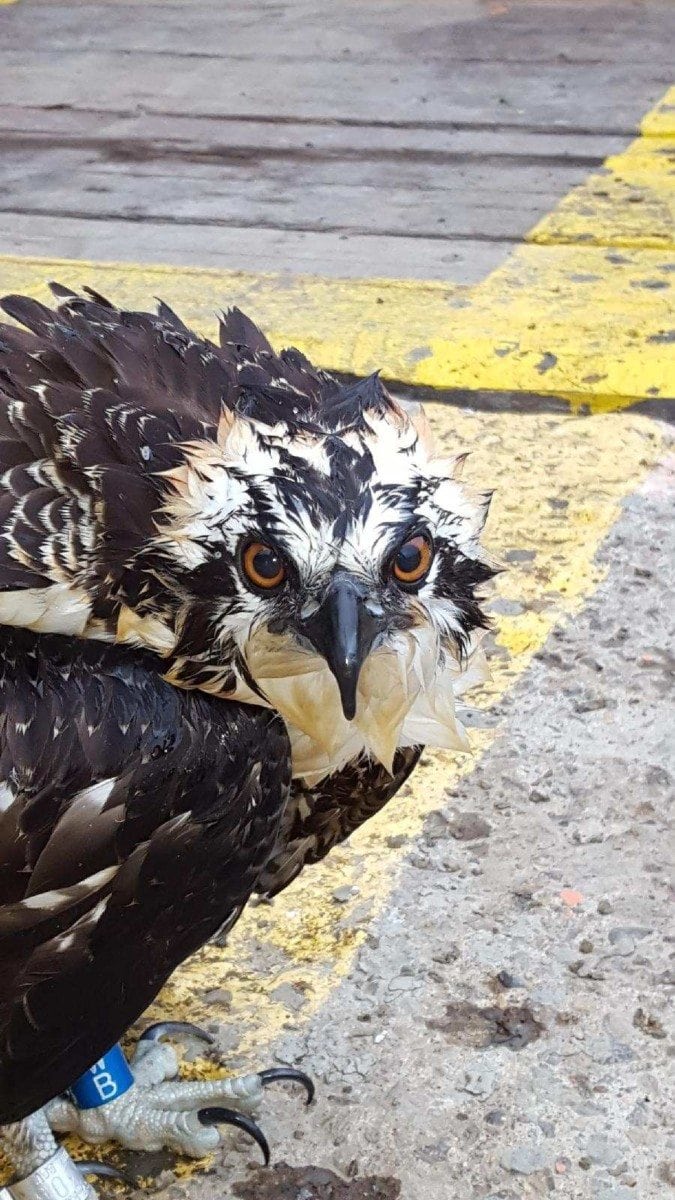Thank you to everyone who has been following our Osprey nest cam on the Richmond shoreline! We had sad news on Saturday, July 9. Whirley, the older chick, was not able to survive the injuries sustained before s/he was fished out of the Bay last week. We are reprinting excerpts from WildCare’s letter to the Osprey cam community below.
Meanwhile, Rivet — Whirley’s younger and more cautious sibling — has started taking short flights with lots of parental supervision and is doing well. If you don’t see Rivet or the parent Ospreys on the cam for a few minutes, don’t worry! They are probably flying, perching, or resting nearby. Check the “Around the nest” camera — one or more of the family is often perched on the crane’s beams near the nest.
Thank you so much to everyone who tried to help Whirley — WildCare, of course, but also the Dutra barge crew who fished the bird out of the Bay, our Osprey volunteers, and all the well wishers whose hearts were with Whirley. It is a rare privilege to have such an intimate view of a family of wild creatures, but with that privilege comes all the risk and pain of a wild life.
At Golden Gate Bird Alliance, we are committed to giving Bay Area wildlife the best possible shot at long, healthy lives and survival as species. Ospreys and other birds will always face natural threats such as diving accidents and predators, but we can minimize the risks added by humans such as trash, pollution, building collisions, and destruction of habitat.
Want to help make the Bay Area a better habitat for Rivet and other wild birds? Come to one of our habitat restoration events. Join one of our conservation committees. Or tell your friends about simple steps such as recycling their fishing line and properly disposing of trash and household chemicals.
Letter from WildCare
Dear friends:
It is with a heavy heart that we share with you the news that Whirley did not make it. The CT scan confirmed the multiple fractures that we had feared on x-rays and also clearly revealed even more structural and muscular damage beyond those. The severities of her injuries are consistent with a high velocity impact which could’ve been with a structure of some kind but due to the absence of external wounds, it is also a fair hypothesis that these were sustained from a water impact during a fishing attempt. Even if her injuries had been reparable, she would never be able to fly again. This has been an invaluable learning experience for all groups involved and will serve to help countless ospreys in the future.
Learning to be an osprey is an incredibly difficult challenge, as evidenced by a less than 50% survival rate of first year birds. Being a wild animal is hard and most people never witness just how hard up close. This is a very painful conclusion for all of us osprey family followers. However, we can all take comfort in the fact that so many people care! The folks who rescued her form the water saved her from what would’ve been a certain and horrible death from drowning. The volunteers who drove her to WildCare and brought her fish daily, the staff and volunteers at GGBA, GGRO, Fish and Wildlife, many more I’m sure I’m forgetting, and all of you who are so invested- are stewards for these magnificent birds….
To end on a positive note, with the help of many agencies, we were able to successfully treat and reunite a fledgling osprey with her parents and siblings just two weeks prior. Look for that uplifting story and amazing video on WildCare’s website soon.
Again, thank you all for your love of wildlife.
Sincerely,
Melanie Piazza
Director of Animal Care

